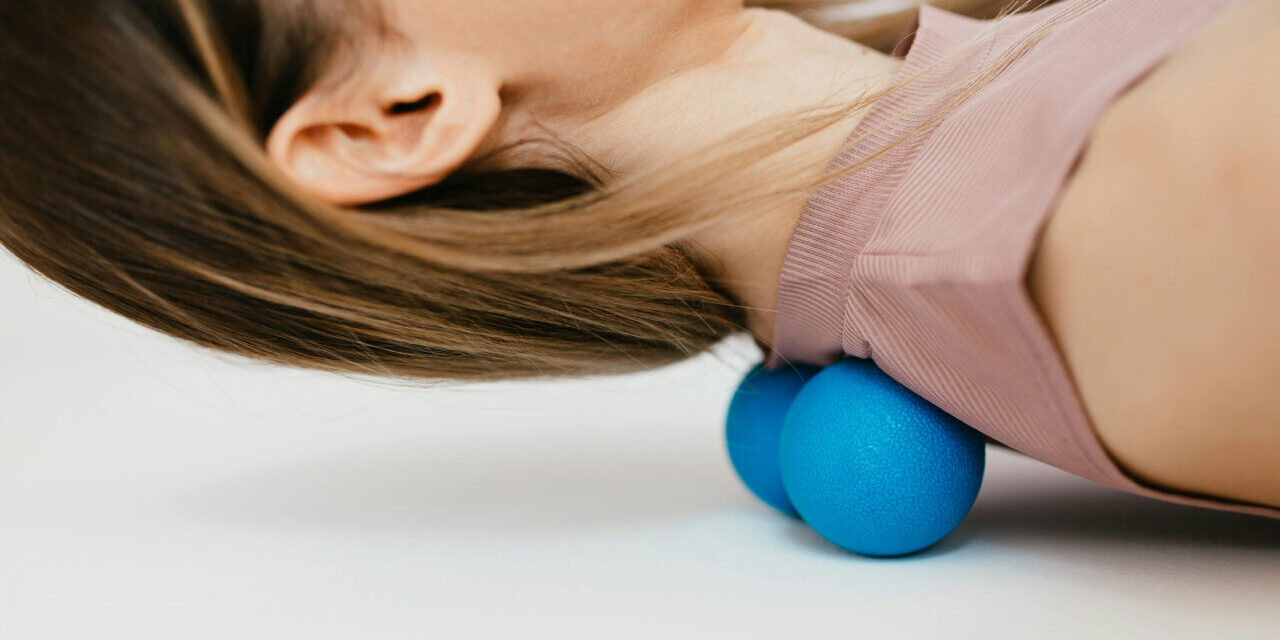Sustained Pressure vs. Regular Massage
Something I tell all my clients is that when it comes to working with the soft tissues of the body–the muscles and fascia—sustained pressure is the most effective. Whether you’re receiving a massage from a practitioner or doing it on yourself with a foam roller or lacrosse ball, applying pressure to one spot for several minutes or more is the best way to give your body the full reset it’s craving. Let’s take a look at sustained pressure vs. regular massage in detail.
Working With the Body Requires Patience
Understanding sustained pressure vs. regular massage is essential before putting them into practice. Most standard deep tissue or Swedish massage sessions consist of gliding, rubbing, rolling, kneading, plucking, strumming, or moving tissue around in some way. A lot of the self-massage techniques out there are similar. The problem with techniques like this is that they can be jarring for the body. If a massage therapist rolls back and forth over a knot or trigger point, the body will naturally flinch or tense up repeatedly in response to the pain. While this may provide some relief, the results are superficial, and the body often becomes more guarded.
When we apply pressure to a knot or trigger point and then sustain the pressure for 3-5 minutes or more, the body has enough time to move past the initial flinch response and start to relax. Once the body relaxes under the pressure, all kinds of magical healing things happen.
The nervous system takes time to acclimate to new sensations. Just like if you get into a cold river, there is an initial shock. But once you’re used to it, it’s often blissful and rejuvenating. For example, if someone is splashing cold water on you repeatedly, it will be a lot harder for your system to adjust.
What is Swedish Massage?
This type of massage is focused on muscle relaxation, targeting superficial muscles rather than the connective tissue. This technique can help lymphatic drainage and relieve soreness in muscles secondary to exercise.
What is Deep Tissue Massage?
Rather than focusing on relaxation, deep tissue massage helps treat muscle pain and stiffness by working on adhesions and knots within the muscle, freeing up the tissue for better movement.
What Are the Limitations of Deep Tissue and Swedish Massage?
When your muscles are stimulated by massage, repeatedly and for short periods, your muscle does something called “guarding.” This means that your muscle tenses up and stays in a tightened or “clenched” state in an effort to protect itself from injury. Though you will experience some relief from massage, and it will feel good, it doesn’t create long-lasting changes in your muscular architecture
What Does Sustained Pressure Massage Do?
The connective tissue or “fascia” between all your muscles, organs, and bones can change from an almost solid state to a liquid gel-like form. This is similar to butter, coconut oil, honey, and other “non-Newtonian” fluids, which change their viscosity depending on temperature and movement. Sustained pressure over time generates electrical activity, which helps your fascia return to this liquid gel-like state. You can feel this happening during trigger point therapy or myofascial release sessions or while lying on a foam roller or lacrosse ball. You’ll feel a superficial layer of tension release and then a sensation of melting or softening like hard clay being rehydrated.
Then, after about 3-5 minutes, there’s a release of cytokines, which are healing proteins involved in decreasing inflammation, increasing circulation, and boosting the immune system. In other words, the body’s innate intelligence and self-healing capacity start to take over. This happens through mechanotransduction, where mechanical pressure is converted into electrical and chemical signals. It’s possible that this return to a more fluid-like state allows for the release of toxins stored in the tissues. This only happens if the pressure is sustained long enough for the fascia to soften, but once these effects occur, the relief you’ll get from the session will potentially last for weeks to months.
What Are the Benefits of Sustained Pressure Massage?
The benefits of sustained pressure can help alleviate muscle tension, reduce pain, and improve mobility. This is commonly used to treat some injuries, break up scar tissue, reduce muscle adhesions, and help those experiencing chronic pain conditions.
Try This at Home for Relief
You can try this at home using a tennis ball, lacrosse ball, or other tool of your choice:
- Lay down on your back
- Choose a side to work on first, positioning the ball in the soft tissue between your spine And shoulder blade
- Move back and forth very slightly until you find a knot or trigger point; the pain should be about a 6-7/10, just enough that you can still relax into it
- Sink into the ball, breathing slowly, focusing on unclenching any muscles of the shoulder and back
- After about 3-5minutes, you’ll feel the muscles soften, and the pain will start to decrease
- Sit up, tune into your body, and see if you can feel the difference from one side to the other
- Repeat for the opposite side
Conclusion
There’s nothing wrong with other massage techniques as long as they’re performed with sensitivity and attunement to the body. Gentle Swedish massage can also benefit the lymphatic system. But when it comes to resolving chronic pain patterns, sustained pressure is the most thorough and effective method. It may seem simple compared to all the expensive massage guns and devices out there, but often, the simplest tools create the most profound changes in the body. To learn more about sustained pressure vs. regular massage, or sustained pressure techniques, consult with a massage therapist who does body work at Heart Spring Health.
Sources:
- Oschman, James “Energy Medicine: The Scientific Basis” Elsevier (2000) Barnes, John(2022)“MyofascialRelease:The Benefits of Sustained Pressure”
- https://www.massagemag.com/the-john-f-barnes-approach-to-myofascial-release-96180/
- Barnes, John (2018) “The John F. Barnes Approach to Myofascial Release”
https://www.massagemag.com/the-john-f-barnes-approach-to-myofascial-release-96180/





